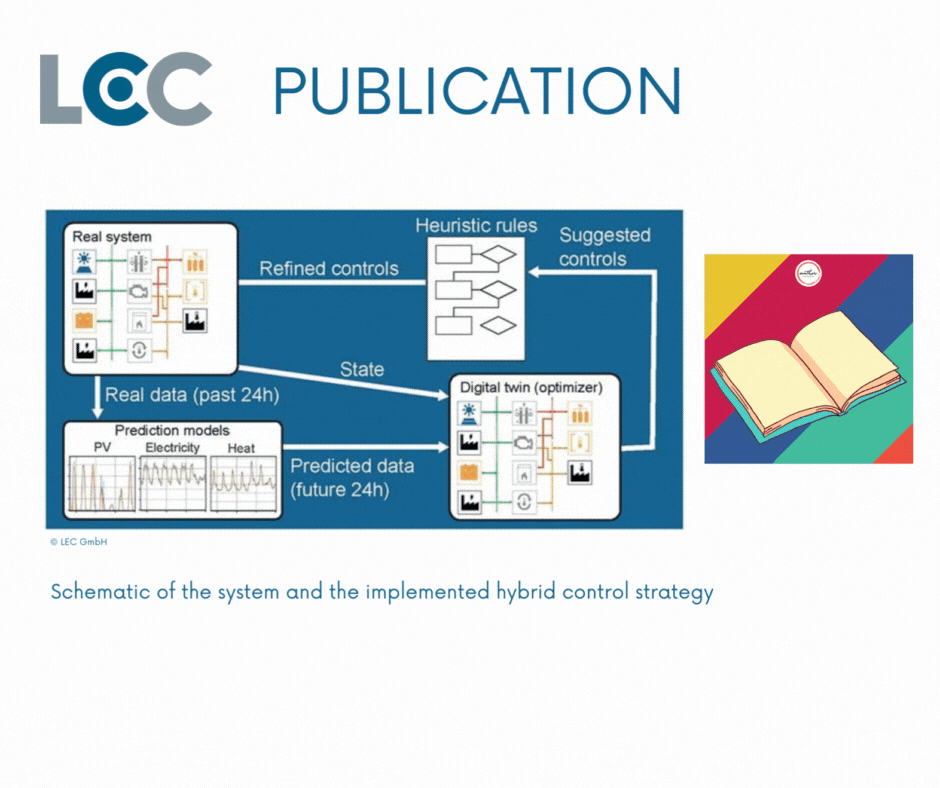Finding optimal control strategies for renewable microgrids using LEC ENERsim
Finding optimal control strategies for renewable microgrids using LEC ENERsim
This paper develops a predictive control concept and applies it to the use case of an industrial-scale microgrid. Different strategies are tested in order to determine which can efficiently supply both electricity and heat loads over the entire year with solar PV as the primary energy source. The system was designed to include several flexibility options such as battery and thermal energy storage, demand-side management, and H2 production for seasonal energy storage.
A hybrid strategy consisting of day-ahead data prediction and optimization including a H2 production incentive combined with simple heuristic control rules performed best in terms of costs because it allowed the system to operate with fewer oversized components.
The system layout was parameterized with the tool LEC ENERsim.
Link: Publikationen – Large Engines Competence Center LEC | Large Engines Competence Center

